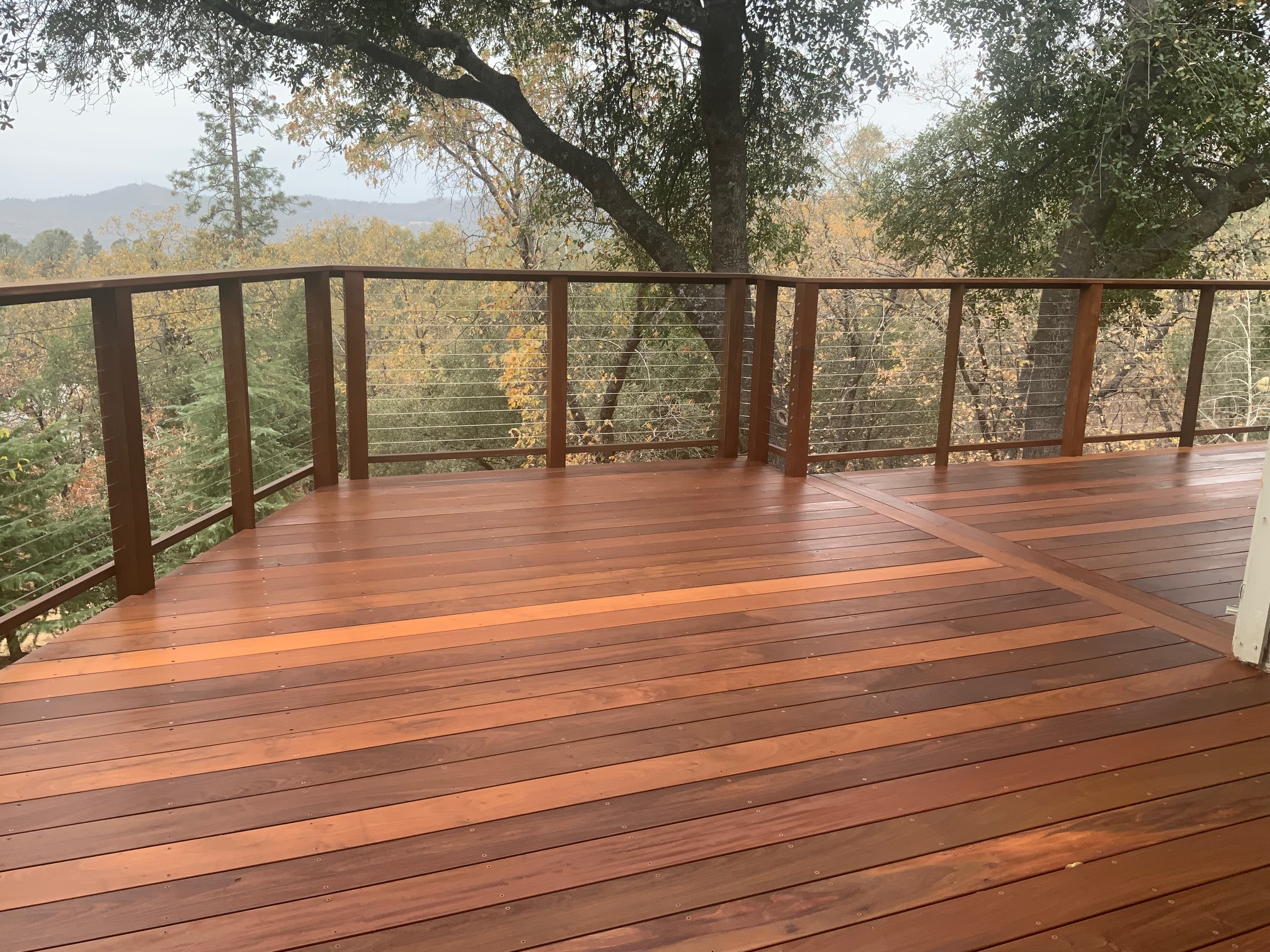Protect and Improve: Revealing the Art of Fence Staining
Selecting the Right Stain for Your Fencing: Tips and Factors To Consider
When it comes to enhancing the appearance and keeping of your fence, choosing the appropriate discolor is critical. We will certainly discover the various types of fencing spots, variables to consider before selecting a tarnish, pointers for preparing your fence for staining, and the distinctions between water-based and oil-based stains. Additionally, we will certainly dive into picking the appropriate discolor color to complement your fencing and boost your outside space.
Comprehending Different Sorts Of Fence Discolorations

On the various other hand, water-based discolorations are made from acrylic or latex and provide an extra subtle color to the timber. Water-based discolorations are simpler to clean up and have a quicker drying out time contrasted to oil-based spots.
Choosing between oil-based and water-based discolorations depends upon numerous elements, consisting of personal preference, the desired appearance, and the degree of maintenance needed. Oil-based discolorations are recommended for fencings in high-traffic locations or those frequently subjected to severe weather. fence staining and sealing. Water-based spots, on the other hand, are a preferred selection for surround domestic locations where look and convenience of use are necessary
When picking the best discolor for their fence,Understanding the differences between water-based and oil-based discolorations helps property owners make an informed choice. Taking into consideration the specific demands of the fence, such as its place, exposure to sunlight, and wanted visual, will certainly make certain that the selected tarnish supplies lasting protection and boosts the general elegance of the fencing.
Variables to Consider Before Choosing a Spot

Different kinds of wood soak up spots differently, resulting in varying degrees of shade intensity and durability. In addition, particular timbers might be more prone to concerns like rot or insect invasion, which might influence the choice of discolor to protect the fence and secure.
The climate and climate problems in your location should also be taken into consideration. You may require a discolor that supplies added defense versus dampness and UV rays if you live in a location with harsh winters or high humidity. Similarly, if your fencing is exposed to direct sunlight for extended periods, a stain with UV inhibitors can help avoid fading and discoloration.
Lastly, it is necessary to consider your preferred aesthetic. Different stains provide various colors and surfaces, enabling you to customize the appearance of your fencing (deck staining). Think about the total design and style of your property, along with any kind of regional regulations or property owner organization standards that might dictate the appropriate stain shades
Tips for Preparing Your Fence for Discoloration
Cleaning up the fencing is a crucial action as it removes dust, grime, and any type of previous layers that might interfere with the discoloration process. Scrub the surface area gently, paying added attention to locations with persistent stains or mold.
After cleansing, allow the fencing to dry totally. fence staining. This action is important as tarnishing find more a wet or moist surface area can lead to bad attachment and an uneven coating. Depending on the weather, it may take anywhere from a few hours to a couple of days for the fencing to dry thoroughly. Guarantee that the fencing is totally dry before proceeding with the staining process.
Prior to discoloration, inspect the fence for any kind of problems, such as loosened boards or nails. This product helps to open the timber pores, permitting the tarnish to permeate a lot more successfully and uniformly.

Contrasting Oil-Based and Water-Based Discolorations
When selecting a discolor for your fencing, it is necessary to compare the features and advantages of water-based and oil-based spots. Both sorts of stains have their own benefits and considerations, so it is critical to comprehend the distinctions in between them.
Oil-based discolorations are recognized for their durability and resistance to use and tear. In addition, oil-based discolorations often tend to last longer than water-based stains, making them a popular choice for fences.
On the other hand, water-based spots are a lot more eco pleasant and easier to tidy up. They have a lower VOC (unstable organic compound) material, which suggests they launch fewer dangerous fumes right into the air. Water-based discolorations additionally completely dry much faster, enabling a quicker application and much less downtime. However, they may not offer the exact same level of protection as oil-based stains, especially in rough climate condition.
Inevitably, the option in between oil-based and water-based discolorations depends upon your specific demands and preferences. Think about elements such as sturdiness, environmental effect, and convenience of application when making your decision. Consulting with a specialist or seeking suggestions from specialists can also help ensure that you pick the ideal stain for your fencing.
Selecting the Right Spot Color for Your Fence
The selection of a proper discolor shade for your fencing is a vital facet of improving its aesthetic appeal and complementing the general style of your exterior room (fence staining and sealing). The appropriate discolor color can change a level, common fence into a striking prime focus that adds depth and personality to your property
When selecting a stain shade for your fence, it is essential to consider the style and style of your home. If you have a standard or classic design home, earthy tones such as neutrals and browns can develop a cozy and inviting look. On the various other hand, if you have a contemporary or modern-day home, you might take into consideration choosing strong and dynamic shades that make a declaration.
Another aspect to take into consideration is the natural environments of your residential or commercial property. If you have a great deal of plant, a discolor color that matches the natural landscape, such as environment-friendlies or deep reds, can develop a unified and natural appearance.
Additionally, it's worth thinking about the maintenance needed for different discolor shades. Lighter shades tend to show dust and put on more easily, while darker shades can conceal flaws and require less frequent touch-ups.
Ultimately, the selection of tarnish color for your fence need to show your individual design and choices - fence cleaning. Make the effort to seek advice from and explore various alternatives with experts if required, to make sure that you select the excellent stain color that enhances the charm and appeal of your fencing
Verdict
In conclusion, when it comes to picking the best discolor for your fence, it is vital to understand the different types of stains offered and take into consideration aspects such as durability and desired appearance. Picking the appropriate stain color can boost the general visual appeals of your fence.
We will certainly check out the different kinds of fence discolorations, aspects to think about prior to selecting a discolor, suggestions for preparing your fence for discoloration, and the distinctions in between oil-based and water-based spots.Separating in between water-based and oil-based stains is important when understanding various kinds of fence spots. Water-based discolorations are much easier to clean up and have a quicker drying out time contrasted to oil-based stains. Additionally, oil-based stains often tend to last longer than water-based stains, making them a popular selection for fences.
In verdict, when it comes to picking the appropriate discolor for your fencing, it is important to comprehend the different kinds of stains offered and take into consideration elements such as sturdiness and preferred look.